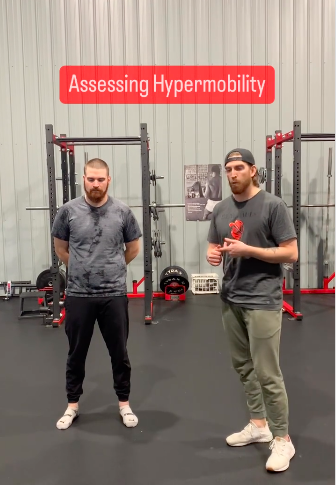N=1 The Case for Individualization

Writing highly specific, detailed programs takes a lot of effort and time, but the athletes that I work with deserve nothing less. A "cookie cutter" or "one-size fits all" approach is flat out a disservice to the athlete.
Now, in certain settings where the coach to athlete ratio is extremely high, it's nearly impossible to write custom programs for every individual. However, athletes should at least be bucketed into different groups based on some of the components I will outline below.
If you apply the same program to all athletes, you can effectively group athletes into thirds: one group will improve, one will stay the same, and one will get worse or injured.
For me, that's just not close to good enough. So, in today's post I'm going to elaborate on why program individualization is key to an athlete's development, and some various components that I look at to effectively customize.

1) How Lax Are They?
Simply put, hypermobile individuals don't possess as much congenital (genetic) stiffness in the ligaments surrounding their joints. Consequently, they have more range of motion to take care of. We want to give these athletes stability in ALL the range they possess.
A good rule of thumb is we want to see our active range of motion equal passive range of motion.
It is important to note that laxity is not the same as instability (which would be something that's acquired through an injury, as an example). This is a very complex topic and I dig deeper on it here:

2) What Movement Deficiencies Are Present That Are Inhibiting Optimal Performance or Could Lead to Potential Injury?
We are in the movement business. We want to create elite movers at their sport. Effortless. Explosive. Efficient.
Where are the energy leaks? What is the dysfunction? Is it a technique issue or is it something going on under the hood (lack of mobility, stability, global strength, specific strength, etc). Diagnose the problem, program accordingly, and then coach your face off to ensure exercises are executed with high precision.
Ideally, we want to identify potential problems and get ahead of the game before they lead to any issues!
3) What skeletal archetype do they possess, and are they more concentrically or eccentrically oriented?
It's vital to take this into account as an individual's anatomy will greatly dictate their movement strategies and how they create and handle forces.
An ectomorph with a more narrow thorax is going to have a greater propensity towards pulling exercises and max velocity.
On the other hand a mesomorph with a wider thorax will have a greater propensity towards pushing exercises and acceleration.
I expand on this at length in the video below:
In my next point I'll touch on whether the athlete would be best served to focus on improving their weaknesses or spend time and effort leveraging their strengths.
4) What's their training age, and where are they in their career?
If they're a novice or an intermediate, we generally want to identify the low hanging fruit and attack their weaknesses.
With advanced athletes, we actually want to keep their strengths strong and look to enhance those strengths and just nudge the weaknesses!
Time is a finite resource. A lot of times we are limited by time constraints outside of our control.
When programming, you always want to start at the end and work backwards.
As an example of this dichotomy, a collegiate sophomore pitcher can afford to mix in more GPP with an eye towards the upcoming season as well as 'slow cooking' certain qualities that will aid in his long-term development.
On the other hand, you may have a senior pitcher who has one more chance to gain a couple of miles per hour to try and get a chance to pitch professionally to prolong his career. He most likely will need to be programmed differently (and more narrowly) with the mindset of a sprint to leverage certain qualities to give him that opportunity.
There are many reasons why athletes should receive individualized programs, but none more than they simply deserve someone taking the time and care to give them a tailored approach to help them get the most out of their potential.

